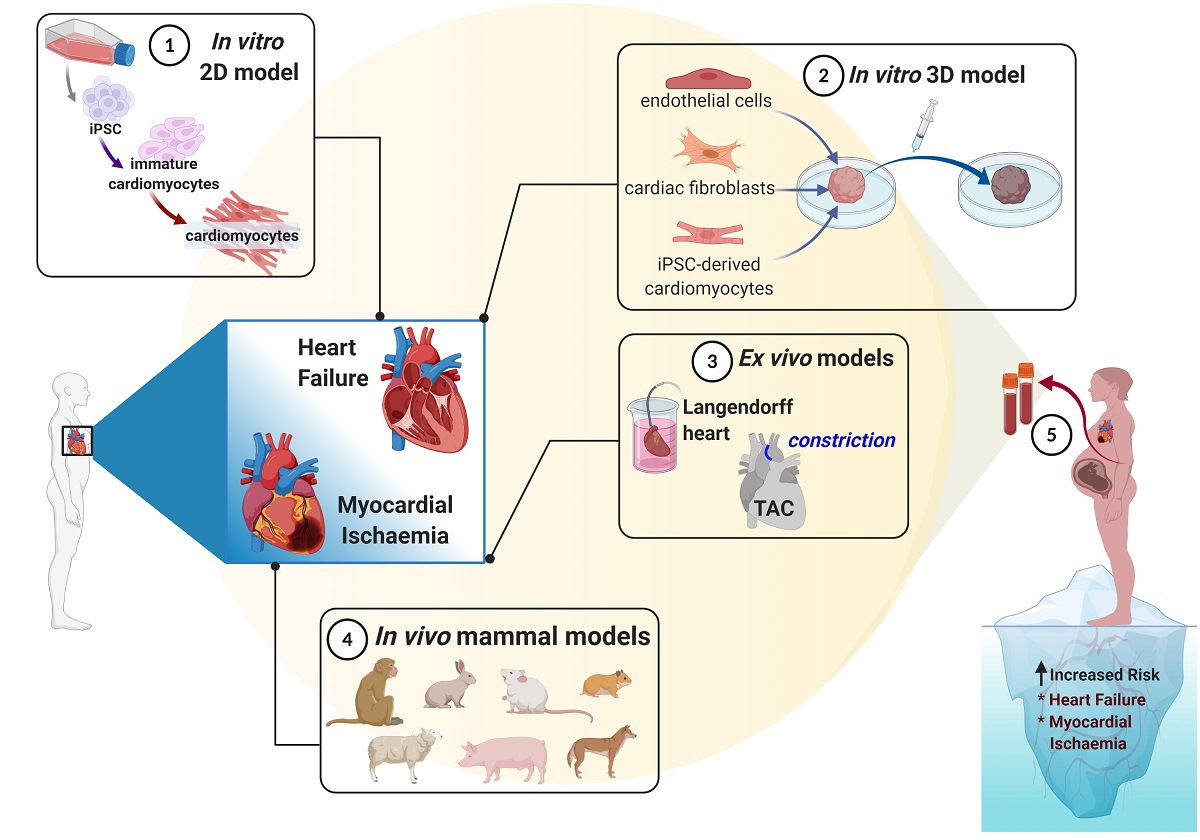Preeclampsia is a multifactorial cardiovascular disorder diagnosed after 20 weeks of gestation that is the leading cause of death for both mothers and babies in pregnancy. The pathophysiology remains poorly understood due to variability and unpredictability of disease manifestation when studied in animal models. After preeclampsia, both mothers and offspring have a higher risk of cardiovascular disease (CVD) including myocardial infarction or heart attack and heart failure (HF). Myocardial infarction is an acute myocardial damage that can be treated through reperfusion, however, that therapeutic approach leads to ischemic/reperfusion injury (IRI) often leading to HF. In this review, we compared the current in vivo, in vitro and ex vivo model systems used to study preeclampsia, IRI and HF. Future studies aiming at evaluating CVD in preeclampsia patients could benefit from novel models that better mimic the complex scenario described in this article.

